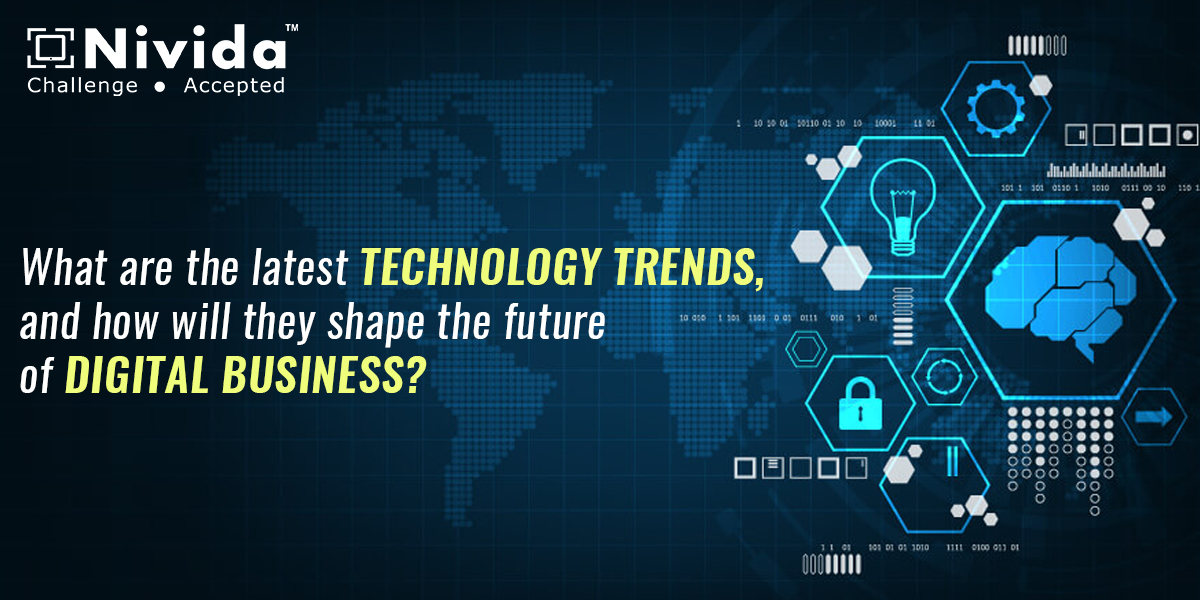Different organisations will be affected by different trends. The tight integration of most trends means that different combinations of technology are required at different points in your business’ cycle of growth. CIOs and IT executives will use their knowledge of their firms' short-term and long-term goals to determine the most important trends to follow.
By addressing the most pressing issues, CIOs and technology leaders face the latest technology trends that will help enhance digital capabilities and generate growth. They provide a road map for setting your company apart from the competition, achieving your company's goals and making IT executives as well as CIOs strategic partners.
They all accomplish one or more of the following:
Engineering Trust:
By integrating and processing data more securely across cloud and non-cloud systems, the technologies in this area help build a more efficient as well as resilient IT foundation.
Creating a New World:
As your firm begins to embrace new technologies, you can help it grow and accelerate its digital transformation. In order to keep up with the ever-increasing pace of change, these trends allow you to rapidly create applications to automate business processes, optimise the AI, as well as enable the user to take wiser judgments.
Accelerating Growth:
You'll earn revenue and market share in this market area if you take advantage of important technological advancements. With the help of these trends, you can increase value generation and enhance your digital capabilities in the process.
Mentioned below are some of the latest technology trends to watch out for.
Data Fabric:
- The data fabric provides flexible, resilient data integration across business users as well as various platforms. Data is available whenever it is needed, no matter where the data is located.”
- A data network can employ analytics for learning as well as actively indicate where data should be used and altered. As much as 70% of the time spent on data administration can be saved by this
Cybersecurity Mesh:
- Security meshes are an architecture that enables a wide range of security services to be integrated into a single system.
- Best-of-breed security solutions can work together to increase overall security while the control points are being placed near the assets they're supposed to safeguard. Identity, context, and policy adherence can be verified swiftly and reliably in cloud and non-cloud contexts.
Privacy-Enhancing Computation:
- Personal data processing in an untrusted context is becoming crucial due to expanding privacy and data protection legislation and growing consumer concerns, thanks to computation that enhances privacy.
- It is possible to extract value from data without jeopardising privacy using several privacy-enhancing compute techniques.
Cloud-Native Platforms:
- An application architecture that is resilient, elastic, and agile can be built using cloud-native platforms. These platforms allow you to respond to quick changes in digital technology.
- In comparison to the typical lift-and-shift strategy to the cloud, cloud-native platforms make better use of the advantages of the cloud and reduce the maintenance burden.
Composable Applications:
- Apps that can be assembled from a variety of business-centric modules are known as "composable applications."
- As a result, new software solutions may be brought to market more quickly, and the value of the organisation can be released more quickly.
Decision Intelligence:
- In order to improve organisational decision-making, decision intelligence is indeed a useful method. It uses analytics as well as intelligence to learn from, inform, and refine each choice as a series of processes.
- Analytics, simulations, and artificial intelligence (AI) may help humans make better decisions, and they can even be used to automate them.
Hyperautomation:
- As many business and IT processes as feasible can be identified, vetted, and automated using the disciplined, business-driven approach of hyperautomation.
- Hyperautomation allows for scalability, remote operation, and business model change.
AI Engineering:
- AI engineering streamlines AI delivery by automating data, models, and application upgrades.
- The implementation of AI will be operationalized through strong AI governance and AI engineering, both of which work together to assure the long-term economic value of AI.
Distributed Enterprises:
- Using a digital-first, remote-first approach, distributed businesses can enhance staff satisfaction, enhance customer and partner interactions, and expand their product offerings.
- Customers and workers who work from home and from other locations are driving the need for hybrid workspaces as well as virtual services.
Total Experience:
- There are various touchpoints in the whole experience, and the goal is to accelerate growth by aligning the perspectives of both employees and customers across all of these points.
- Customer and employee satisfaction, loyalty, and advocacy may all be improved by managing the experiences of all stakeholders as a whole.
Autonomic Systems:
- Autonomic systems are nothing but self-managed machines and/or computer programmes that adapt to their surroundings and dynamically alter their own algorithms in the present to improve their performance in intricate ecologies.
- In the absence of human interaction, autonomous systems provide a flexible set of technological capabilities that can adapt to changing requirements, situations, and threats while also improving overall performance.
Generative AI:
- Generative AI studies artefacts in order to develop new things that are similar but not identical to the original.
- Video and R&D processes can be sped up using generative AI, which has the ability to develop new forms of creative content.

